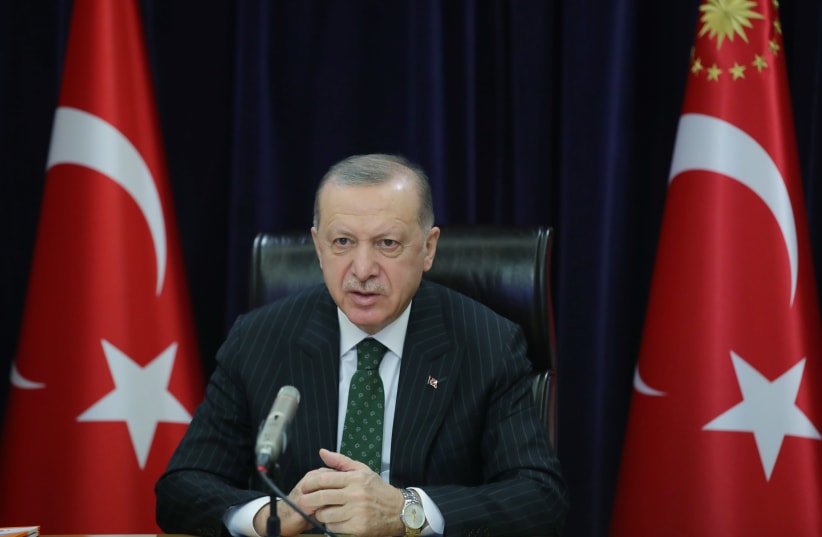Iran’s foreign minister appeared to indicate that Tehran would not oppose a Turkish invasion of another part of Syria.
Turkey invaded Syria in a series of campaigns beginning in 2016, eventually resulting in the ethnic cleansing of hundreds of thousands of Kurds and minorities from Afrin, Sere Kaniya and other areas.
Ankara’s goal is to use part of northern Syria as a kind of new colony, where it will force Syrian refugees to move and displace other Syrians. The goal is demographic change, removing Kurds, Yazidis, Christians and other minorities and putting mostly Arab refugees in their place, and then using pro-Turkey extremist groups to police the area.
The regime has already followed this model in several areas, which are now home not only to displaced Syrians but governed by armed religious extremist gangs, many of which engage in kidnapping, rape and extortion. Some of these groups have been sanctioned by the US, and many of the areas are infiltrated by al-Qaeda, Hayat Tahrir al-Sham and other extremist groups that are labeled as terrorists.
Ankara has vowed over the past year to launch a new invasion. However, the green light it had from the Trump administration to invade areas of Syria and attack US partner forces has been turned to red under the Biden administration. The US has backed the Syrian Democratic Forces, a force that includes Kurds, Arabs, Christians and other groups.
The SDF, which controls eastern Syria, played a key role in defeating ISIS. Turkey, by contrast, enabled most of the people who joined ISIS to cross into Syria.
During the Obama years, the US began to open a relationship with the Kurdish anti-ISIS fighters, then known as the YPG. Those groups in turn have a political leadership called PYD. Turkey views them all as being linked to the PKK, which Ankara views as a terrorist group.
Iran also views them as linked to the PKK, but in the past has had a more nuanced view on the Kurdish issue. Today, Iran has shifted that view, and wants to encourage Turkey to fight the Kurds because it can then swoop in with the Syrian regime to grab any area that the US might be encouraged to abandon. Tehran’s gamble is thus cynical: it wants to use Turkey to get part of Syria, and then use that part to threaten Israel.
This means that Iran’s backing of Turkey is also a threat to the US and Israel, because Tehran wants to work with Ankara to expel any groups linked to the US so that they can divide part of Syria. Then Iran can be allowed to traffic weapons and drugs more easily in southern Syria.
Turkey, meanwhile, has another agenda. It wants to blackmail NATO into backing or at least being quiet about its destabilization of Syria to receive concessions from the military alliance regarding Finland and Sweden joining it. Although Turkey is a part of NATO, it tends to work more with Russia and Iran.
TURKEY IS opposed to NATO values, such as human rights and democracy, and wants to use its membership to obtain profits. As part of this, the regime boasts that it has the largest army in NATO. That army is directed toward attacking minorities in Syria, bombing Yazidis in Sinjar, and attacking Iraqis. It also takes delivery of Russia’s S-400 anti-missile defense system, but Ankara knows it can intimidate NATO by claiming to be its southern flank linchpin.
As such, Turkey threatens Greece and Cyprus, as well as the US, but puts its finger on the veto button when it comes to Finland and Sweden joining the alliance. In short, Ankara is able to hold NATO hostage. This is why it meets with the Iranians: it wants to show it has friends in other places.
“We understand Turkey’s security concerns very well,” Iranian Foreign Minister Hossein Amir-Abdollahian told reporters after talks in Ankara with his Turkish counterpart, Mevlut Cavusoglu. “We understand [that] maybe a special operation might be needed. Turkey’s security concerns must be tackled fully and permanently,” Al-Arabiya quoted him as saying.
A “special operation” is the same term used by Russia in its invasion of Ukraine. Turkey is learning from Russia and vice versa. For instance, both have used food as a weapon and enabled extremists in their invasions. Turkey mobilizes poor Syrians and encourages them to join extremist proxy groups; Russia uses the people of Donbas to fight. Russia steals Ukrainian grain; Turkey steals Afrin olives. Iran uses proxies as well.
Thus, the Russia-Turkey-Iran triumvirate works together. They also divide Syria for their own needs. Using the Astana “peace” process, these three countries carve up Syria – and see the US-influenced area in the east, where the SDF is located, as the one thing blocking their control.
Thus, Turkey wants a new invasion to get some new concessions from the US and NATO, and also to get closer to Russia and Iran. It can tell Moscow that if it gives it more of Syria, then Ankara may support Russia’s invasion. Turkey tells NATO that if it backs the invasion, then it will let Finland and Sweden join.
Turkey tells Iran it will support it taking over southern Syria so it can threaten Israel. Turkey then tells Israel’s foreign minister that it will work against Iranian plots on Turkey soil. Encourage Iran to use Syria instead – that is how Ankara thinks of this policy.
In this way, Turkey uses each country against the other – NATO against Russia, and Iran versus Israel – and Ankara plays both sides for its own benefit.

